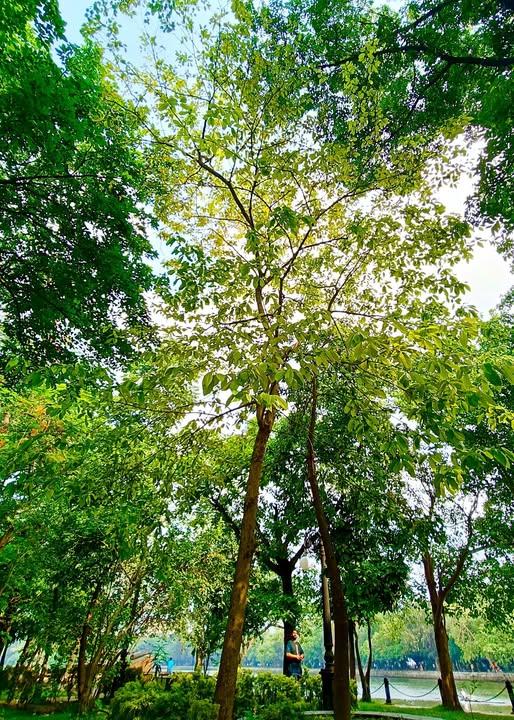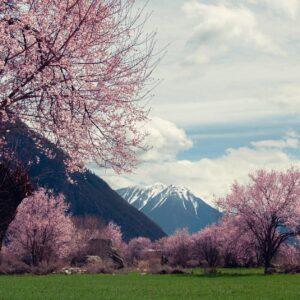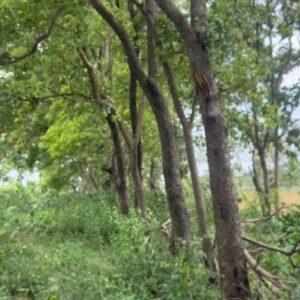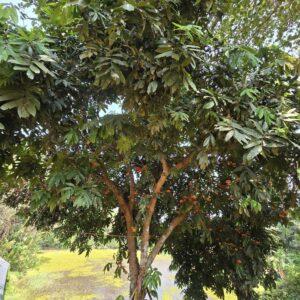Terminalia tree Terminalia Tree – A Tropical Canopy of Beauty and Resilience
The Terminalia tree, a genus that includes species like Terminalia catappa (Indian Almond), Terminalia mantaly (Madagascar Almond), and Terminalia arjuna, is a group of tropical and subtropical trees known for their striking horizontal branching, lush foliage, and adaptability. These trees are widely used in landscaping for their shade, ornamental value, and ecological benefits. With their symmetrical form and seasonal color changes, Terminalia species are ideal for urban avenues, large gardens, and coastal landscapes.
Light Requirements
Terminalia trees thrive in full sun and require ample light to support their broad canopy and healthy foliage. For best results:
– Provide six to eight hours of direct sunlight daily
– Plant in open areas where the tree receives unobstructed light
– In shaded conditions, growth may slow and the tree may develop a sparse canopy
Full sun exposure not only enhances growth but also supports flowering and fruiting in species like Terminalia catappa.
Temperature and Climate
Terminalia trees are well-suited to warm, tropical, and subtropical climates. They perform best in USDA hardiness zones 10 to 11 and prefer temperatures between 20 to 35 degrees Celsius (68 to 95 degrees Fahrenheit). While they can tolerate brief periods of cooler weather, they are not frost-hardy and should be protected from temperatures below 10 degrees Celsius.
These trees are particularly well-adapted to coastal environments and can withstand salt spray, making them ideal for seaside planting.
Watering Needs
Terminalia trees require moderate watering, especially during their establishment phase. Once mature, they become relatively drought-tolerant. To maintain healthy growth:
– Water deeply once a week during dry periods
– Allow the top few inches of soil to dry out between waterings
– Reduce watering during the rainy season or winter dormancy
– Apply mulch around the base to retain moisture and suppress weeds
Avoid overwatering, as Terminalia roots prefer well-aerated soil and can suffer from root rot in soggy conditions.
Soil Type and Composition
Terminalia trees prefer well-draining soil with a slightly acidic to neutral pH, ideally between 6.0 and 7.5. The ideal soil conditions include:
– Sandy or loamy soil enriched with organic matter
– Good drainage to prevent waterlogging
– Compost or aged manure to support root development and canopy growth
These trees are tolerant of poor soils and can grow in coastal sands, making them suitable for a wide range of landscapes.
Flowering and Growth Habit
Terminalia species are known for their distinctive tiered branching and symmetrical growth. Depending on the species, they can grow between 10 to 30 meters tall. Their growth habit includes:
– Broad, spreading canopy with horizontal branches
– Deciduous or semi-evergreen foliage, depending on the climate
– Small, inconspicuous flowers that attract pollinators
– Fruit-bearing in some species, such as the almond-like drupes of Terminalia catappa
The seasonal leaf color change in some species adds ornamental interest, with foliage turning red, yellow, or purple before shedding.
Maintenance and Pruning
Terminalia trees are low-maintenance but benefit from occasional pruning to maintain their shape and health. Recommended practices include:
– Prune in late winter or early spring to remove dead or crossing branches
– Shape the canopy to encourage balanced growth
– Apply a balanced fertilizer in early spring to support foliage and root development
Regular pruning also improves air circulation and reduces the risk of pests and diseases.
Landscaping and Design Uses
Terminalia trees are versatile and widely used in landscape design. They are ideal for:
– Avenue and boulevard planting due to their symmetrical form
– Coastal gardens and beachfront properties
– Large lawns, parks, and institutional campuses
– Shade trees for patios, courtyards, and public spaces
Their broad canopy provides excellent shade, while their resilience makes them suitable for challenging environments.
Conclusion
The Terminalia tree is a symbol of strength, structure, and tropical elegance. With its graceful form, adaptability, and minimal care requirements, it is a valuable addition to any landscape. Whether you are designing a coastal retreat, a city boulevard, or a lush garden, Terminalia offers beauty, shade, and ecological benefits that endure through the seasons.





Reviews
There are no reviews yet.